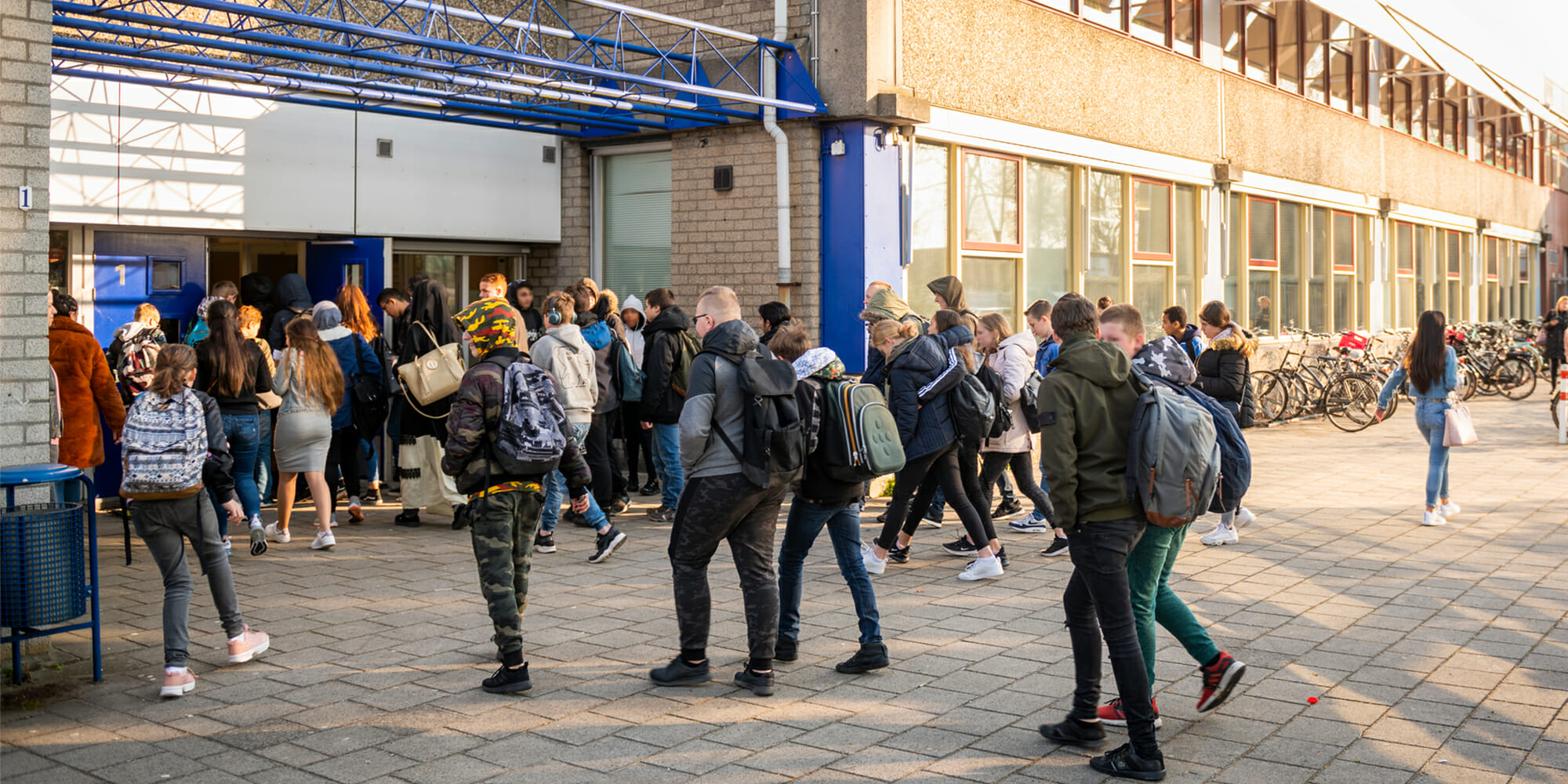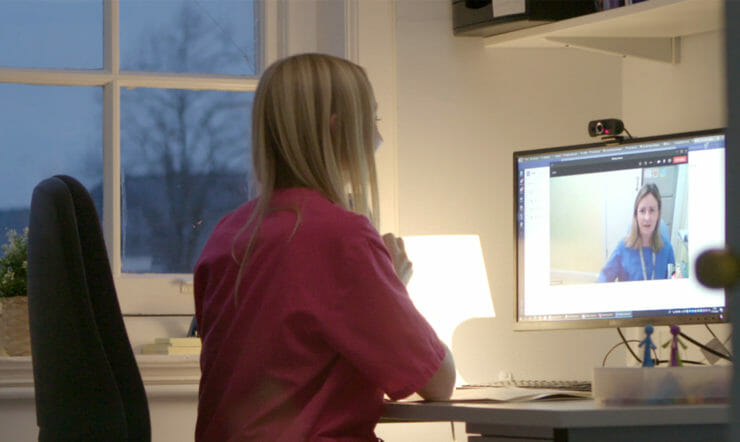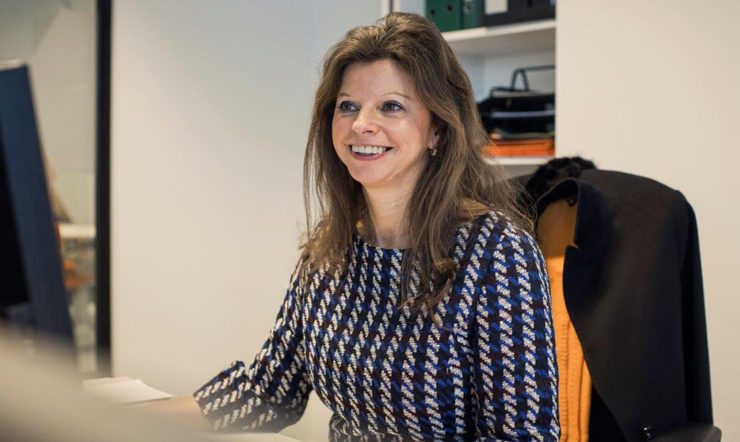“It’s all about teaching and giving time to the educators, so they can give time to the students. If we can make IT simple, that’s my purpose, my thing.”
Peter Schep, ICT Manager at PCOU Willibrord Foundation, explains why he believes efficient IT is central to the learning and development of both educators and students. Like Peter, the foundation is an advocate for incorporating innovative technology into education.
At the heart of the foundation, which manages 41 schools across the city of Utrecht, Netherlands, is the aim of ensuring that students receive the best teaching and resources. One way the members of the foundation believe this is possible is through hybrid learning – which uses technology to facilitate a seamless combination of remote and classroom-based teaching.
Pre-Covid-19, the technology in each school varied. “There are very small schools and very big schools,” summarizes Peter, “there are some very tech-minded schools where everyone has a laptop, and some schools which only work with books. Each school has a different perspective on the way they prefer to teach.”
Until the start of 2020, each school had its own decentralized structure, making it difficult for the foundation to standardize its processes, and collect and manage the data from several different Student Information Systems (SIS). So, Peter and his team initiated a process to move all the schools’ data into a centralized infrastructure. This new, flexible architecture meant that the schools could better focus on education – while a single centralized team would take care of the IT.
At the time, Peter wasn’t aware of just how vital this move would be in tackling another challenge that was just around the corner.
A global pandemic expedites digitization
Shortly after the new centralized infrastructure was in place, COVID-19 struck. The foundation had to act quickly to adapt to a new reality within the education sector; it was no longer possible to continue to teach students on-site.
Prior to the pandemic, only one school had installed Microsoft 365 to facilitate remote learning. Originally, the plan had been to roll out this technology gradually if, and when, a school decided it wanted to digitize its teaching, but this was no longer practical.
“The educators were searching for a method to keep teaching, and the only way to do this was digitally,” says Peter. “So, we started rolling out the new technology, implementing Microsoft 365 with Microsoft Teams in 31 primary schools, and 3 secondary schools. We had to flip traditional classroom education.”
From March to July, Peter’s team began implementing the technology in each school and educating the teachers on how to use Microsoft Teams and other Microsoft 365 applications to take advantage of its capabilities. It was a process that only took around six days per school to execute. “We created and led webinars, so the teachers could learn how to use the new technology through e-learning. We also shared documents around Microsoft Teams, to show the teachers how to approach subjects or create tests for the students.”
This process empowered educators to teach in a new, flexible way online. But, while initiating hybrid learning in as many schools within the foundation as possible made remote learning achievable, Peter and his team faced further challenges.
Building a contingency through automation
As summer arrived, the global pandemic was still very much a part of the lives of the citizens of Utrecht, and the ICT team at PCOU Willibrord realized they had to create a more sustainable long-term solution to remote work, should another crisis hit.
With Microsoft Teams installed across the majority of the schools, the foundation needed to find a way to handle the logistics of organizing thousands of students and teachers into classes; a previously manual process completed at the end of each school year.
To do this, Peter and his team worked with Microsoft partner, SPEYK to devise and execute a strategy that would allow them to connect the school administration software (SIS) – which stored data on the students, teachers and classes – to a centralized, automated system.
“We talked to SPEYK because we knew that if we could connect something to that source and provide it to Teams, then we could create 5,000 digital classes, which are always up-to-date and accurate,” Peter adds.
“When COVID-19 came, Peter asked us how we could facilitate distance learning in the schools,” says Erwin Peters, Sales & Marketing Manager at SPEYK. “We were thinking about how to make the hybrid teaching solution sustainable over multiple school years. That’s when we started the project to implement Microsoft School Data Sync, which allowed us connect the SIS to Teams to create an automated transition from one school year to another.
“We worked with one of our consultants to implement and analyze data from the SIS. We then translated it to an organizational structure that fit in with the schools as a part of the hybrid rebirth.”
This centralized SIS, integrated with Microsoft School Data Sync, is central to the efficient daily running of classes. “If a teacher has COVID-19 or is unable to work,” Peter explains, “we can replace the educator in the SIS and nothing changes for the student. They can still attend the lesson as they normally would in the school building or remotely and there is a teacher. So we can provide ongoing education.
Microsoft School Data Sync ensures that remote learning at PCOU Willibrord schools run smoothly from the end of the school year to the beginning of the next. This simple, fixed standard technology has allowed Peter’s team to create 8,359 class groups within Microsoft Teams with 9,369 students and 678 teachers linked to those classes for the school year 2020-2021. The automated operation means that previously manual processes are now more convenient, quicker and secure.
A traditional sector begins to evolve
Over the next couple of years, Peter and his team are working towards implementing predictive analytics and a chat bot function, as well as exploring how Artificial Intelligence can help teachers become more time efficient.
PCOU Willibrord prides itself in continuing to invest in innovation, and as such, Peter and his team are always open to new technology. “I’m looking for partners who are doing cool stuff with a passion for education,” he shares. “It’s always with Microsoft technology and always with Cloud technology.”
For many traditional schools across the city of Utrecht, there has long been a reluctance to adopt hybrid ways of learning and teaching for fear of losing a sense of identity. But as PCOU Willibrord continues to respond and adapt to an ever-changing education environment, other schools are beginning to follow.
“I think they have urgency to change now. Every school is thinking about how it can take the digital next step, and everyone recommends moving to one environment. If you can provide flexible IT, you can adapt to the education process. It’s as simple as that.”





















